

Authors Tell Untold Story Of Sioux Warrior Red Cloud. Copyright © 2013 NPR.
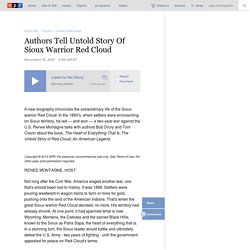
For personal, noncommercial use only. See Terms of Use. For other uses, prior permission required. Sioux Reservation Has Mixed Feelings About Obama Visit. President Obama will go the Standing Rock Sioux Reservation which straddles the border between North and South Dakota.
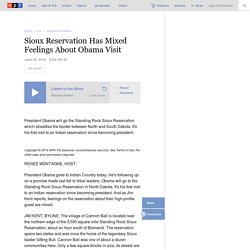
It's his first visit to an Indian reservation since becoming president. Copyright © 2014 NPR. For personal, noncommercial use only. See Terms of Use. For other uses, prior permission required. President Obama goes to Indian Country today. JIM KENT, BYLINE: The village of Cannon Ball is located near the northern edge of the 3,500 square mile Standing Rock Sioux Reservation, about an hour south of Bismarck. DAVID ARCHAMBAULT: It's a good community to visit if you want to share what represents Indian Country and how you can visibly see some hardship. KENT: That life is what elder Florestine Grant calls making the best of your situation. FLORESTINE GRANT: You know, we're not wealthy or anything.
KENT: Florestine says one way President Obama could help the people here is with more funding for education and jobs programs. The myth of the cowboy. Today, populations of wild horse-riders and herdsmen exist in a large number of regions all round the world.

THE WEST - William F. Cody. "Buffalo Bill" (1846-1917) In a life that was part legend and part fabrication, William F.
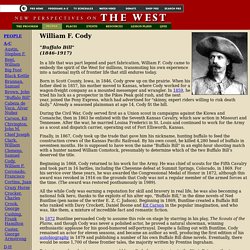
Cody came to embody the spirit of the West for millions, transmuting his own experience into a national myth of frontier life that still endures today. Born in Scott County, Iowa, in 1846, Cody grew up on the prairie. When his father died in 1857, his mother moved to Kansas, where Cody worked for a wagon-freight company as a mounted messenger and wrangler. Memorial of the Cherokee Nation, December 1829. To the honorable the senate and house of representatives of the United States of America, in congress assembled: The undersigned memorialists, humbly make known to your honorable bodies, that they are free citizens of the Cherokee nation.

Circumstances of late occurrence have troubled our hearts, and induced us at this time to appeal to you, knowing that you are generous and just... Crazy Horse - Native American History. Since his violent and controversial death, Crazy Horse, or Tashunka Witko, has become almost a mythical figure of the Great Plains Indian wars.
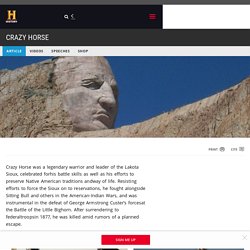
The place and date of his birth are uncertain, but he was probably born in the early 1840s near Bear Butte on the Belle Fourche River in South Dakota. His father was a medicine man of the Oglala subtribe, his mother a Brulé. There has been much speculation about the origin of the name Crazy Horse, but most historians now agree that his father had the same name. As a youth he was known as Curly, but acquired the father’s name after proving himself in combat. He was below average height, his body lithe, his hair and complexion lighter than that of most Indians. His first encounter with U.S. soldiers was on the old Oregon Trail, July 25, 1865, at Platte Bridge, where he acted as a decoy to draw soldiers out of their defenses. Westerns Films. Westerns are the major defining genre of the American film industry, a nostalgic eulogy to the early days of the expansive, untamed American frontier (the borderline between civilization and the wilderness).
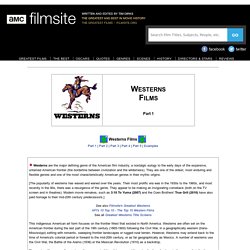
They are one of the oldest, most enduring and flexible genres and one of the most characteristically American genres in their mythic origins. [The popularity of westerns has waxed and waned over the years. Their most prolific era was in the 1930s to the 1960s, and most recently in the 90s, there was a resurgence of the genre. They appear to be making an invigorating comeback (both on the TV screen and in theatres). Modern movie remakes, such as 3:10 To Yuma (2007) and the Coen Brothers' True Grit (2010) have also paid homage to their mid-20th century predecessors.]
See also Filmsite's Greatest Westerns AFI's 10 Top 10 - The Top 10 Western Films See all Greatest Westerns Title Screens This indigenous American art form focuses on the frontier West that existed in North America. Kit Carson: Hero Or Villain? Kit Carson is considered the ultimate American hero by some and the most evil of villians by others.
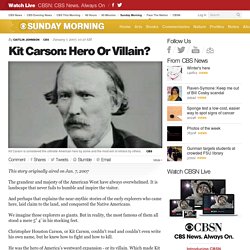
CBS This story originally aired on Jan. 7, 2007 The grandeur and majesty of the American West have always overwhelmed. It is landscape that never fails to humble and inspire the visitor. Les Westerns : l'art et la légende. Un homme, un cheval, et toute l'immensité de Monument Valley, c'est l'image de Western d'une Amérique qui se reconnaît encore dans les mythes de la conquête de l'Ouest.
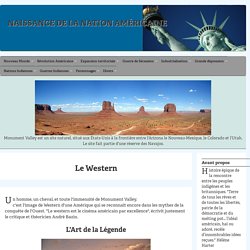
"Le western est le cinéma américain par excellence", écrivit justement le critique et théoricien André Bazin. L'espace entre la côte ouest et les montagnes Rocheuses va constituer la zone privilégiée de la conquête de l'Ouest et du western, au rythme des convois de diligences et des chemins de fer. Les trappeurs déjà présents sur place servent d'intermédiaire avec les Indiens en entretenant le commerce des fourrures. L'histoire du western se confond le plus souvent avec l'histoire des pionniers de l'Amérique. Lorsqu'on interrogeait Orson Welles sur ses trois réalisateurs préférés, il avait l'habitude de répondre: "John Ford, John Ford et John Ford.
" Souvenirs de la Conquête La mythologie. Daniel Boone - Daniel Boone Homestead. The Myth of the Frontier: Progress or Lost Freedom. LinkClick.aspx?link=Myth+of+the+West.